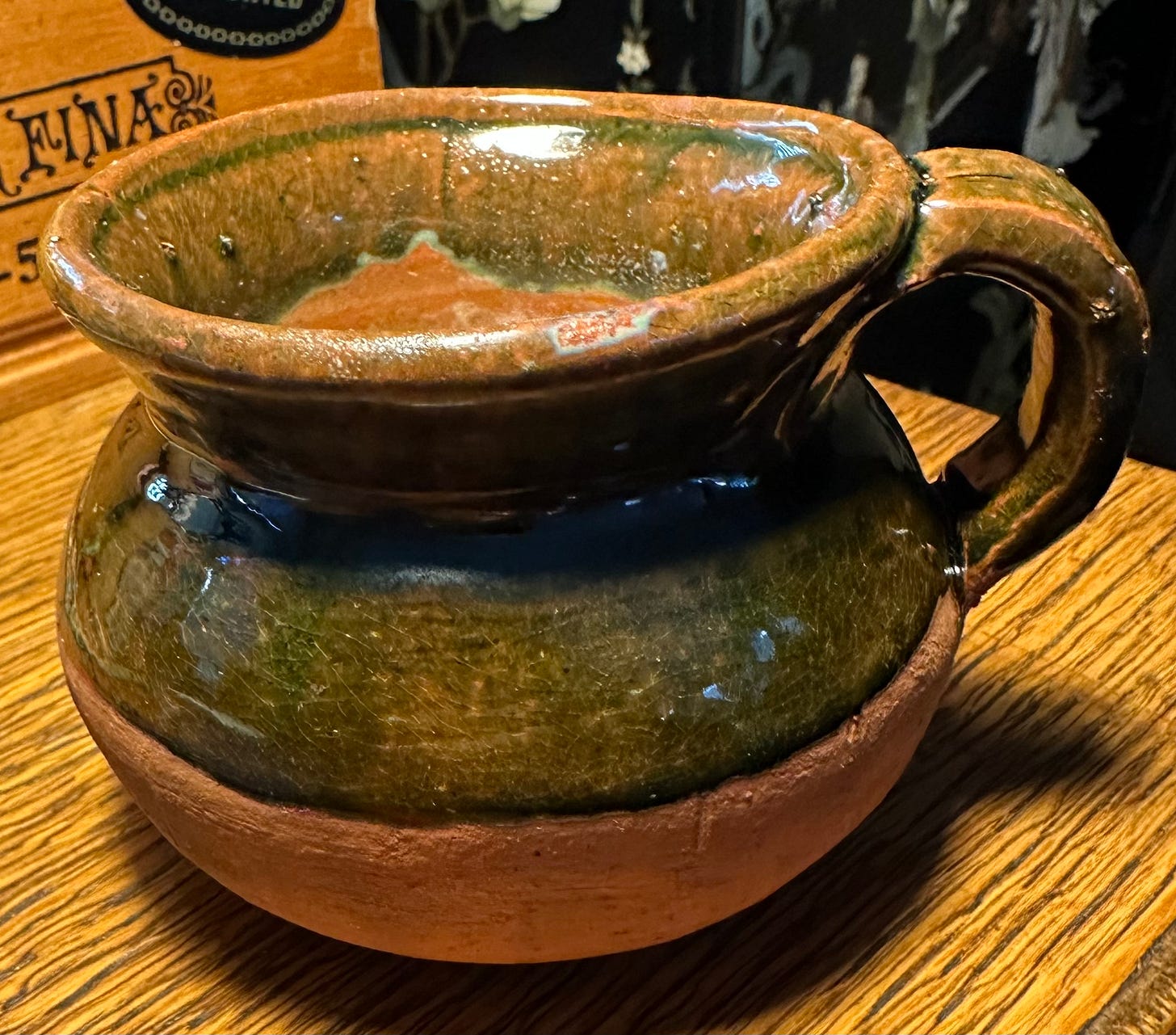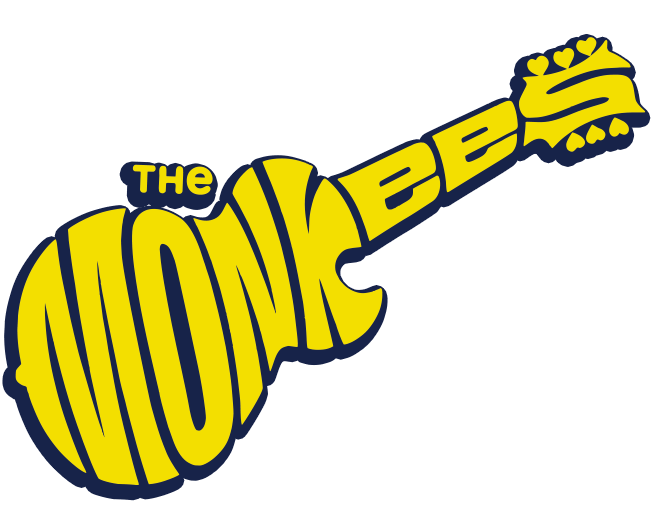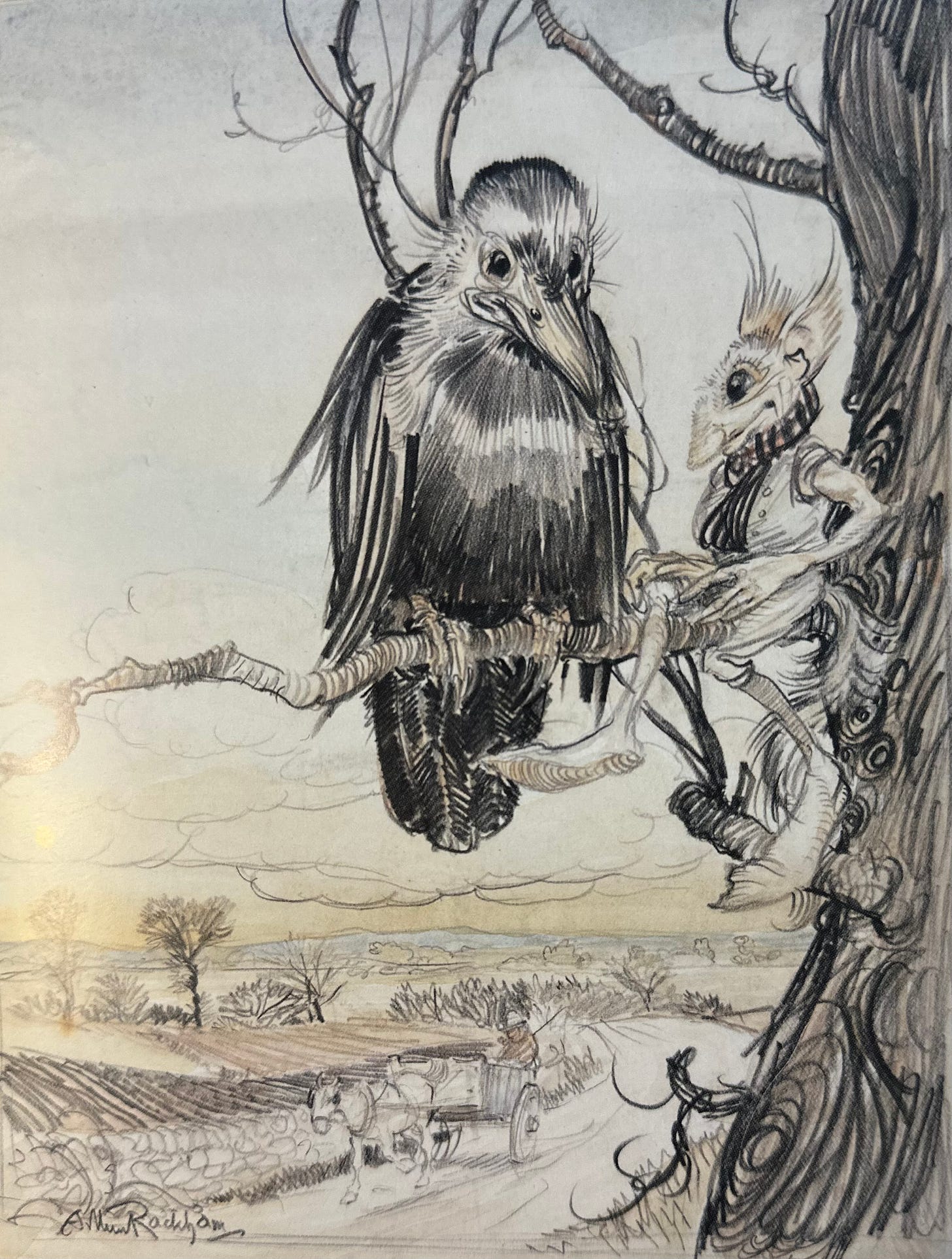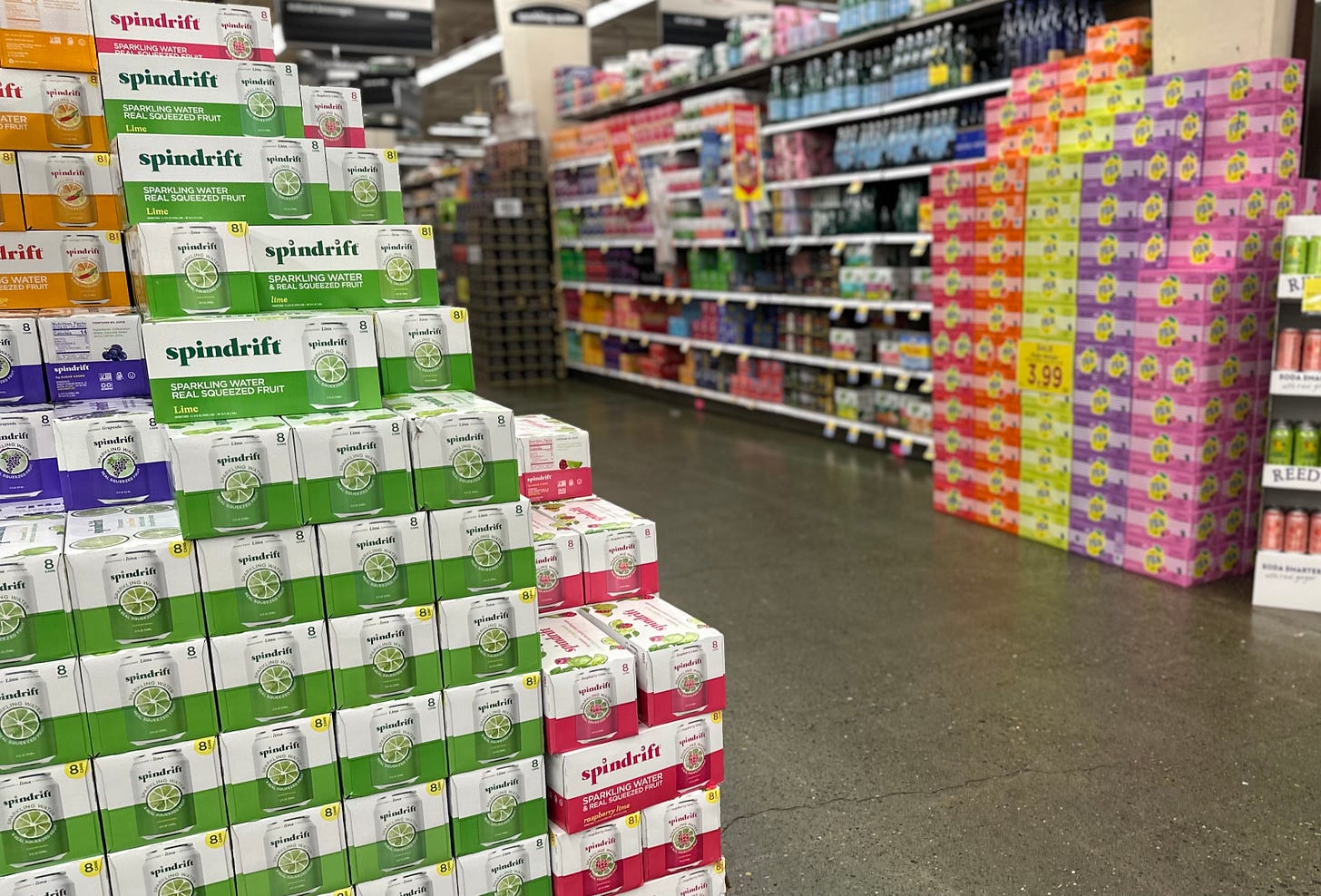Check in
Mission statement
Periodically, I restate what I consider the path to Becoming:
Go slow now. Take time, feel gratitude, forgive. Remember what matters: Spirit, authenticity, justice, words. Every day: Watch things grow. Live with silence. Reflect.
Bus Therapy with friends
In the past week, I have expanded my Bus Therapy practice by traveling with friends.
St. Johns
On a weekday, Diane and I took the scenic 16 bus up Naito Parkway, Front Avenue and St. Helens Road and over the suspension bridge into St. Johns, where we toured downtown and stopped for tacos at Tienda y Panaderia Santa Cruz. This intriguing Mexican store and bakery has a cavernous eating area in the back. I bought an unusual coffee mug for $3.99.

From there, Diane and I had coffee at Two Stroke Coffee Co. and then went home on the 4 Fessenden bus, which languidly traverses many North Portland residential streets before tooling down Mississippi, Fremont and Williams toward downtown.
Gresham
Another day, my friend Maria and I met for coffee at Little T, a popular bakery at Southeast 26th and Division, before heading to Gresham on the FX bus. It was Saturday, and Gresham was hosting both a Saturday market and a farmers market. The sun was bright but it wasn’t hot. We strolled and marveled, ending up at Autumn Coffee Roasting, which you should visit if only to enjoy one of the nicest restrooms in any coffee shop in town.
We took the Blue Line MAX train back toward downtown. Maria and I parted at Lloyd Center, where I got off to catch the 70 bus down to Hawthorne. I then took the 14 bus home from the stop in front of the Burgerville.
As always, my bus travels left me relaxed and energized. My companions endorse the experience. Maybe it’s for everyone!
The Monkees and Liquid Paper
While we were at Little T bakery, Maria noticed a T-shirt with a logo for The Monkees. The wearer was an energetic woman named Christie.
The Monkees, you may or may not recall, were a pop rock group formed for a television show that ran for two seasons beginning in 1966. It was a blatant attempt to cash in on the popularity of another foursome, the Beatles.
I had heard that the four young men in the group were actors who didn’t know how to play their instruments, but Maria says they actually were musical, especially Davy Jones. Band members wrote some of their songs, but others were penned by artists like Neil Diamond, who wrote “I’m a Believer.” Carole King wrote several of their songs, including “Pleasant Valley Sunday” and “I Won’t Be the Same Without Her.”
You may also recall “Last Train to Clarksville” or “Daydream Believer.”
The band consisted of Micky Dolenz, who is still alive at age 80. The others, Davy Jones, Peter Tork and Michael Nesmith, are no longer with us.
You may not have heard that Nesmith’s mother, Bette Nesmith Graham, invented a correction fluid and founded the company that became Liquid Paper. I wish I’d remembered Liquid Paper when I was writing about Wite-Out in the posting called “Analog Life.”
Short stories
I had some experiences this past week that you could call synchronicities. Or coincidences. Or just good stories.
Crow and squirrel
While writing at my desk at a front window, I saw a crow pecking at a small squirrel. The bird would peck, and the squirrel would move, but not far, then the crow would peck some more. I finally took my wheelchair out to see if I could do anything for the squirrel, even knowing it’s best to let nature run its course. Nature is not always gentle.
When I got to the corner, I met Justin Barker and his son Noah, who had been passing by on a bike. They were mourning the squirrel, which now was dead. The boy covered the animal with a plastic flowerpot and arranged some twigs and dirt on it as a memorial.
They were visiting from SF, where Justin writes a Substack about problems with the San Francisco Zoo. This was his first time to connect in person with another Substack writer!
Then, later
Somewhere on Substack I found a reference to the work of Stephen Ellcock, whose books are compendiums of images, and I had just checked two of them out of the library. The day after the crow/squirrel incident, I found a drawing by the great English illustrator Arthur Rackham in Ellcock’s England on Fire: A Visual Journey Through Albion’s Psychic Landscape, with words by Mat Osman.
Rackham’s work featured a crow and a squirrel. They seem to be on better terms than the ones I had seen in the street.
Airbnb coincidence
About six blocks from my home, I stopped and chatted with a woman who was watering her front garden. Her name is Ann, and she mentioned that she runs an Airbnb in her upper floor rooms. My sister Catherine is coming to Portland from Ireland to visit in a few months, so I sent Ann’s information to her. But Catherine was ahead of me! She had reserved a room at Ann’s Airbnb the evening before.
Pop and pop-tops
In the Midwest, we called fizzy sweet beverages “pop.” So do most folks out west. My husband used to call them “soda” because he’s from Brooklyn, but “pop” is fine with him now.
Or you could put a lot of syllables into saying “carbonated beverage.”
Paying for water
I’ve watched bottled water explode in popularity over the decades. It still puzzles me that of the vast choices in water at the local convenience store, so many of the bottles are still and so few carbonated. I like my water “mit gas,” as we ordered it in Europe.
When I was a kid, your choices in pop were cola, 7-Up, root beer and orange or grape Nehi. Pop came in bottles with crinkled metal caps. You needed an opener to pry the cap off. Some yahoos would pull off the cap with their teeth, which any normal person could tell is a bad idea.
Gas stations in those days had weird pop vending machines that held the bottles by the neck. You inserted a coin and the neck hold relaxed, but just for one bottle at a time.
Pop-tops
I barely remember when beer started coming in aluminum cans with smooth tops that needed to be pierced with a pointed “church key” opener (one big hole for drinking and a smaller one opposite to regulate the air in the can). By the time I could legally drink beer, in 1971, pop-top cans had been on the market for about a decade.
At first, the little pop-top flange came off the can, creating a littering nightmare. You might have stepped on one in the sand at the beach. Ouch!

Eventually the technology evolved to keep the opening ring attached to the can. Go ahead, break a fingernail!
Pop-tops all around
Now pop-top rings are increasingly found on food items. In these itinerant days, not everyone has a can opener at hand.
Food in cans with opening rings used to be confined to arcane types of fish, like anchovies and sardines. Now it’s spread to tuna and all sorts of other food items—canned meals like chili or beef stew; soup; pineapple chunks. And don’r forget Spam.
Pop, pop that top
Pull the tab, hear the gasp, feel the fizz. The world is made of tiny bubbles. Beer at room temperature, ice-cold cola, Mountain Dew, Dr. Pepper, grape soda. We’re newly in love with no-cal water, Just mild flavors and bubbles in a can. It’s refreshing, of course, but also A mark of our sugarless virtue. Cans are ubiquitous—I mean They’re all over the planet. Black plastic bags full of cans, Wages for homeless in my city. Recycle, recycle those cans, They’re worth 10 cent each, after all. Keep them out of the landfall the easy way— By just drinking water from the tap.
The miracle of the aluminum can
I learned a lot from this video, “The Ingenious Design of the Aluminum Beverage Can,” in which Bill Hammock describes how aluminum beverage cans are made and how pull tabs work.
Making a single aluminum can is an incredibly complex process, and it happens 180 billion times every year. Manufacturers worldwide turn out 6,700 aluminum cans every second—enough to circle Earth every 17 hours. (I’m thinking that’s end to end.)
It takes more energy to mine and smelt aluminum than any other metal. Fully 2 percent of energy use in the world is spent on aluminum. The energy it takes to make 4 soda cans is equivalent to filling 1 of the cans with gasoline.
Using recycled aluminum takes only 5 percent of the energy it would take to make a new can. So be grateful for those plastic sacks full of cans taking up seat space on the bus on their way to the recycler.
Checkout
Sonnet
A friend and reader of Becoming said he liked my sonnets. His remark inspired me to write one. Thank you, David!
Moonlight
The moon, my window, playing on the bed, Light in the night, unbidden, welcome, fraught. Fraught how? It’s like an fine, unraveling thread, Unweaving my reality, freeing what I caught. I caught the vestiges of anger, grim and lower, Salted with grudges, a grave, ungiving lord. While underneath the bedclothes, I still cower Heart thumping, breath snared in the raveling cord. These midnight thoughts come from the moon unbidden. Worthy of nothing, fresh as old manure. What now of hope, the sweet gem I keep hidden Clear in my soul, where silver thoughts run pure? Come to me, Spirit, now in my wakening hours, Fold me, mold me, bring me what is ours.
Whistling
I’m taking the bus to Home Depot to pick out a new fridge. Someone is whistling in the back of the bus. I can’t make out the tune.
In Home Depot, I hear equipment—air conditioning?—softly screeching and whistling.
As I await my turn to talk to the appliance salesperson, I’m reading an ebook version of Wolf Hall. In that novel set in the England of the Renaissance, Hilary Mantel writes an anecdote where a blackbird picks up a note from a recorder (the wind instrument) and whistles it. In seeming answer, a boatman whistles from the water.
More whistling
The famous line from “To Have and Have Not,” Bacall telling Bogart to “just put your lips together and blow.”
A jingle for Dawn dishwashing soap: “rinses clean as a whistle,” followed by a few whistled notes.
The poem that begins “in Just-/spring,” by e e cummings, in which “the little lame balloon man whistles far and wee.”
The song that tires sing as they caress the pavement when you’re driving on the freeway.
A ghostly whistling that you can hear any time. Just cup your ear and listen.
Retreads
It’s summer. The living is supposed to be easy. When you are find yourself with nothing to do, I invite you to kick back and enjoy some writing from the Becoming archives. Here are a few of my own favorite posts, all of them about music.
One early, brief posting, “Synchronicity in poetry and song,” is perhaps my favorite. It features a beloved Russian song set to words by the poet Mikhail Lermontov. When I reviewed the post, I was crestfallen that the video of a group of Russian men singing this soulful piece outdoors in gorgeous harmony was no longer available. I couldn’t find another version, but Robert did, by searching in Russian.
Many of my early posts are about playing music. One of them, “Dead people, sunrises, how to play slow music,” features my favorite fiddle piece of all time and talks about the spine-tingling tension of hitting an unexpected C natural at the apex of the tune.
“In between: Poetry and music play well together” is a long but very rich post that starts off with ice fishing and moves on to the vaudeville song “Lydia, the Tattooed Lady,” with discussions of Gilbert and Sullivan, poetry with internal rhyme and the Episcopal hymnal. I discover a hymn tune called “St. Kevin” and note that Kevin is the patron saint of blackbirds.
There are more than 150 posts in the Becoming archive. Each of them is unique. When you have a free moment (when do we ever?), you may enjoy scrolling through them. Randomness is a gift. You may have noticed.
Till next week
I write Becoming for you. Subscribe, please, if you haven’t already. You don’t have to read Becoming every week, though of course I’m delighted if you do. You don’t have to pay, either. It’s all gloriously free. Tip me, if you like, at PayPal.
Like what you just read? Take 10 seconds to find and click the heart icon. And I always, always like and appreciate comments.
Take care now, and come back next week.
—Fran








Fran, I always enjoy your writing. I somehow connect with it and look forward to reading your next collection of everyday musings and encounters.
As always, my high regard for your insights and views of this thing called life.